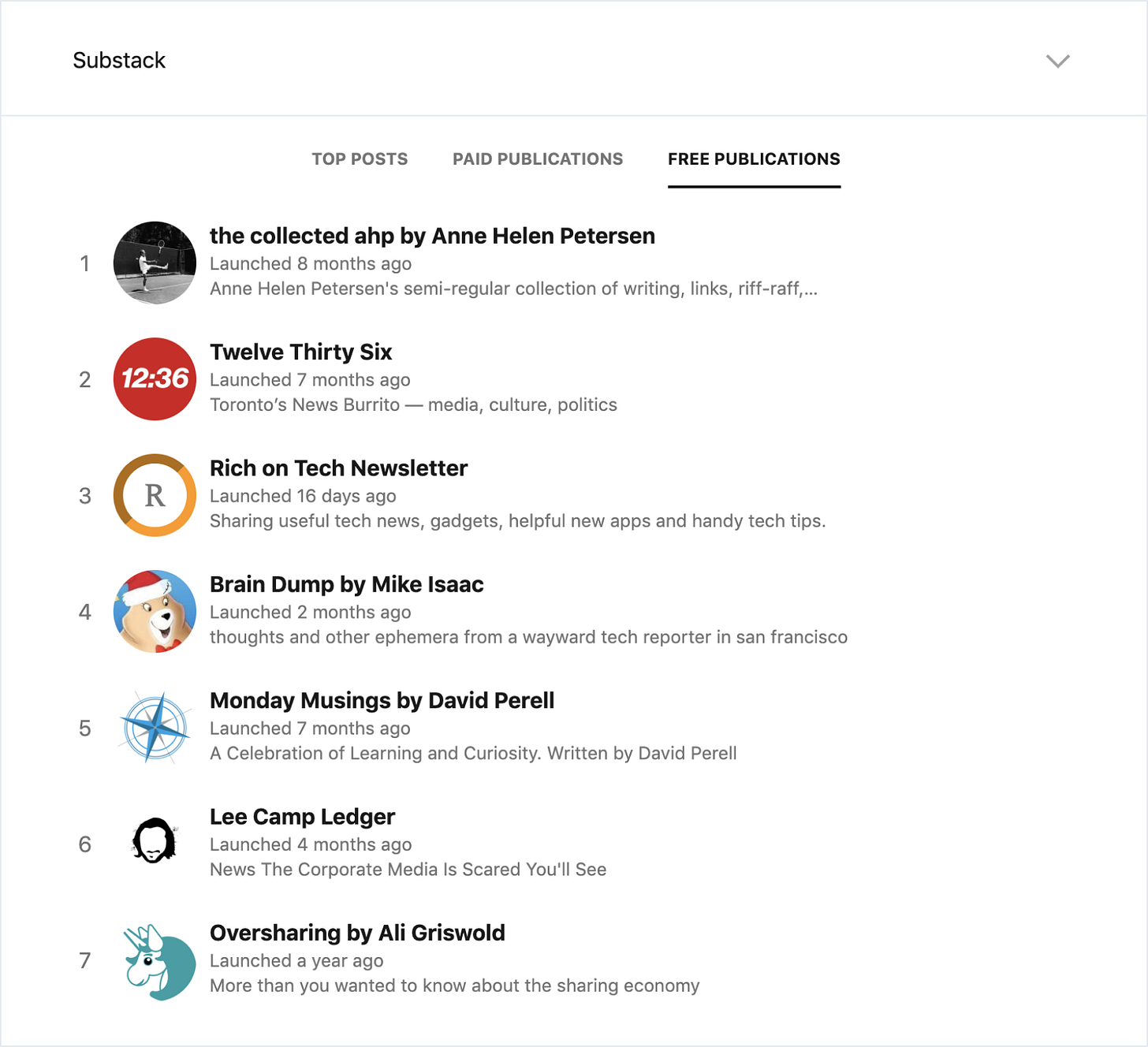Last week, we launched publisher leaderboards on substack.com to help publishers find new subscribers and subscribers find great publishers. We’ve received a lot of good feedback since the launch, but a few people worried that the leaderboards could turn Substack into a popularity contest. That’s understandable. At first glance, they look a bit like the algorithmic feeds on other social networks that cause people to compete for attention.
But the problem with algorithmic feeds is not that they use an algorithm. The problem comes when the algorithm rewards bad behavior. When you optimize for superficial engagement, you get clickbait, outrage, and addiction. For some companies, that superficial engagement is where the money comes from.
At Substack, because we don’t serve ads, we don’t make any money from superficial engagement. Instead, we make money when readers decide to pay publishers, by taking a cut of the revenue. We like this model because it means we only do well when publishers do well. Consequently, we want to do our best to help publishers find more (paying) subscribers.
The leaderboards are one step towards that, but we are being careful not to mess things up. We want to make sure that the rules that drive the algorithmic feed are based not on superficial engagement but on value. The beauty of a publishing ecosystem based on payments is that you can get a sense of value by looking at what subscribers like.
We want to design our leaderboards – and every feature we build – based on good rules, where attention is valued instead of exploited. We want to amplify the work that readers are happily paying for. This is obviously easier said than done, and we know the first versions of these discovery tools won’t be perfect. But we are taking steps that we think will help.
Subscribers matter most
For a start, we don’t look at what drives clicks. Instead, we look at signals that indicate reader satisfaction. For the free publications, that means we rank according to active readership. For the top paid publications list, we focus on revenue, which serves two important purposes: 1) It shows what readers deeply value; and 2) it gives other publishers a clear idea of what’s possible on Substack and how to get there.
For the top posts list, we focus on how many times a post has been “liked.” But there are no like buttons on the leaderboard page for a reason: these aren’t simple drive-by upvotes. The only people who can like posts are a publication’s free or paid subscribers. We attribute greater significance to the likes from paying subscribers because we think the satisfaction of your most invested readers is the best measure of success.
As a matter of principle we believe that publishers and their subscribers should get to determine the terms of their relationships. That’s why publishers on Substack set their own prices, and why they can leave and take their mailing list, content, and payment relationships with them any time they want. And that’s why publishers can opt out from not only the leaderboards but also the community features (likes and comments) generally.
Our goal is to power rewarding relationships between publishers and subscribers. We want to build a place where publishers get paid to do their best work and subscribers get signal instead of the noise they get everywhere else. As we said when we started the company a year and a half ago, we are striving to build a system where we can all “be selective with our media choices, homing in on the interests, writers, and localities that we find most meaningful.”
When you buy a subscription to a publication, you are making a considered choice. Rather than refreshing a feed in search of a dopamine hit, you are deciding that you want to bring the publisher’s voice into your mind. This dynamic is the antidote to the attention economy because it puts your best self back in charge.
The leaderboards are just one initiative in a larger project of helping independent publishers succeed, and although we hope we’re headed in the right decision it is likely we’ll make some mistakes along the way. We are grateful to the people who have given us feedback on this, both positive and negative, and will continue to listen. Please feel free to leave a comment or email us at hello@substack.com.


